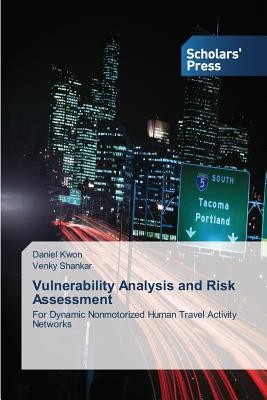
- We will send in 10–14 business days.
- Author: Daniel Kwon
- Publisher: Scholars' Press
- Year: 2014
- Pages: 324
- ISBN-10: 3639710975
- ISBN-13: 9783639710977
- Format: 15.2 x 22.9 x 1.9 cm, softcover
- Language: English
- SAVE -10% with code: EXTRA
Reviews
Description
Understanding the dynamics of nonmotorized human travel activity systems is of great importance for addressing national security concerns. Specific attention is focused on developing a systematic method for evaluating and identifying network vulnerabilities and conducting lifecycle risk assessments. Downtown Seattle in Washington State, due to its border proximity and multimodal accessibility, is the case study providing the empirical basis for this research. The analytical approach establishes a layered modeling framework that structures individual traveler activity information with lifecycle data at the disaggregate level, and leads to a micro-level simulation basis for visualizing nonmotorized flows in downtown corridors. It is hypothesized that lifecycle status plays a crucial role in the development of traveler risk via exposure in space and time of activity choice, influenced by personal relationship dynamics, work status, educational and socio-economic background, and residential choice. This book will demonstrate a proof-of-concept that carries the reader through an implementable modeling framework that will characterize risk on a lifecycle basis.
EXTRA 10 % discount with code: EXTRA
The promotion ends in 17d.10:56:03
The discount code is valid when purchasing from 10 €. Discounts do not stack.
- Author: Daniel Kwon
- Publisher: Scholars' Press
- Year: 2014
- Pages: 324
- ISBN-10: 3639710975
- ISBN-13: 9783639710977
- Format: 15.2 x 22.9 x 1.9 cm, softcover
- Language: English English
Understanding the dynamics of nonmotorized human travel activity systems is of great importance for addressing national security concerns. Specific attention is focused on developing a systematic method for evaluating and identifying network vulnerabilities and conducting lifecycle risk assessments. Downtown Seattle in Washington State, due to its border proximity and multimodal accessibility, is the case study providing the empirical basis for this research. The analytical approach establishes a layered modeling framework that structures individual traveler activity information with lifecycle data at the disaggregate level, and leads to a micro-level simulation basis for visualizing nonmotorized flows in downtown corridors. It is hypothesized that lifecycle status plays a crucial role in the development of traveler risk via exposure in space and time of activity choice, influenced by personal relationship dynamics, work status, educational and socio-economic background, and residential choice. This book will demonstrate a proof-of-concept that carries the reader through an implementable modeling framework that will characterize risk on a lifecycle basis.


Reviews